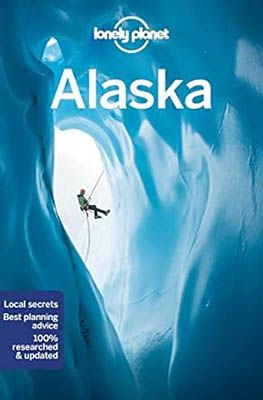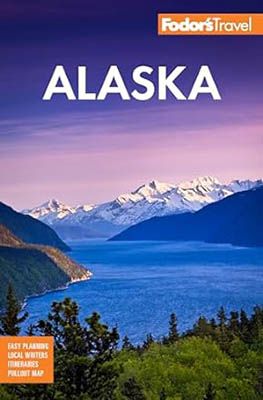Tour of Alaska through the endless nature of the Last Frontier
Tour of Alaska through the endless nature of the Last Frontier
Planning a holiday in Alaska is not something you do spontaneously. It takes some preparation to arrange things in time. After all, the season is short and the demand for accommodation and car rental is quickly met.
For us, nature is the main reason to go there. What we expect are glaciers, mountains, and salmon-filled rivers. But also bears and moose. Let’s see if this image is confirmed in a self-planned three-week tour of Alaska. Are you tagging along?
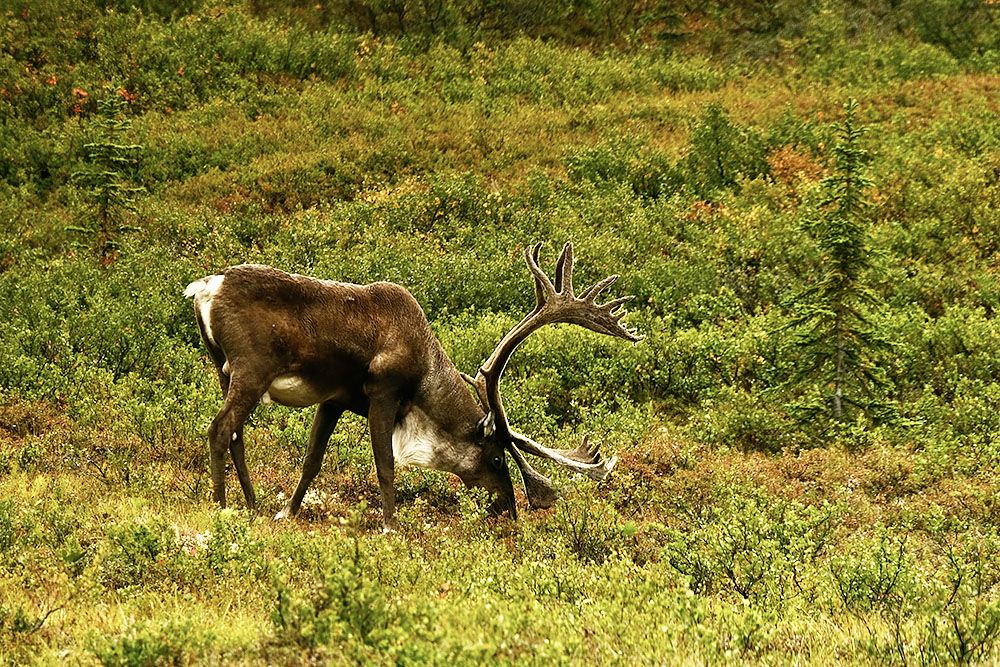
Anchorage, the start of our tour of Alaska
On the day of arrival after the flight, we need some time to adjust to the time difference with Europe. As a result, we are up early the next morning. Therefore, we will stay in Anchorage for two nights to acclimatize. The city itself is not perceived as beautiful, rather functional. The surroundings, located on the Gulf of Alaska, are beautiful and strategic. A great place to get to know the state we are about to discover. You can read about how to fill your time in our blog about Anchorage, which we will soon publish on this website.
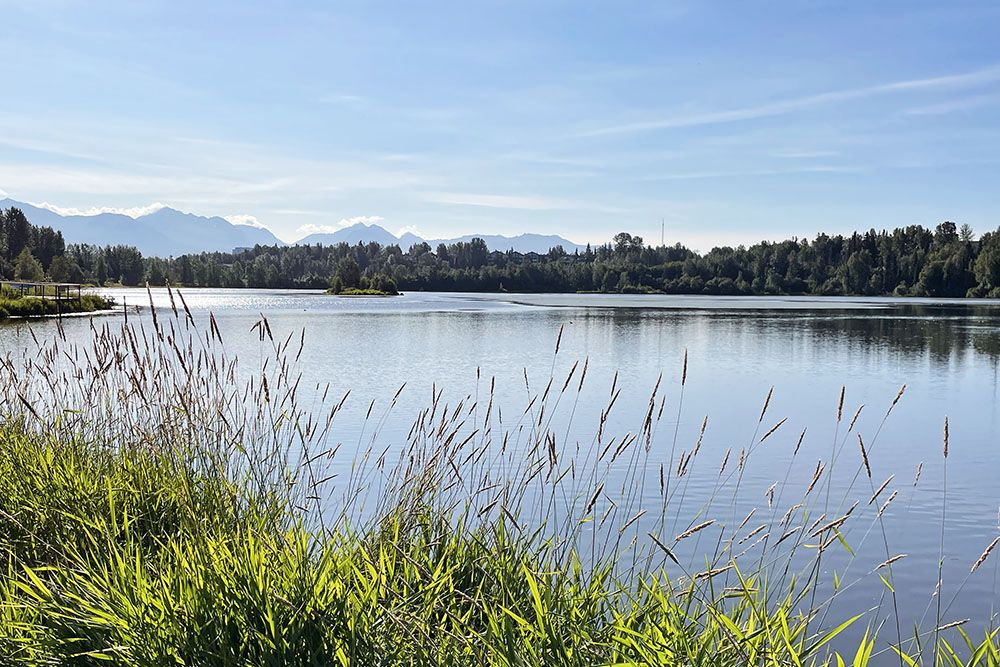
Our tour of Alaska in stages
After two nights in Anchorage, rested and accustomed to the new time zone, we pick up our rental car at the airport. We then leave the city heading north. The first stage of our tour takes us via Spirithouses and Muskoxen to Talkeetna.
The route is not very long this day, so we think it would be nice to see some interesting spots along the way. First stop is Eklutna Park, half an hour above Anchorage. This is a unique cemetery of the original Indian population from the interior. Colorful wooden houses are part of the graves. They are also called ‘spirit houses’. The place dates back to 1650 and is still in use. On the same site, you’ll find a Russian Orthodox church from 1840. The cultures are wonderfully intertwined here. We take a detour to visit a muskox farm near Palmer. It’s interesting to see, but the tour itself is a bit long for us.
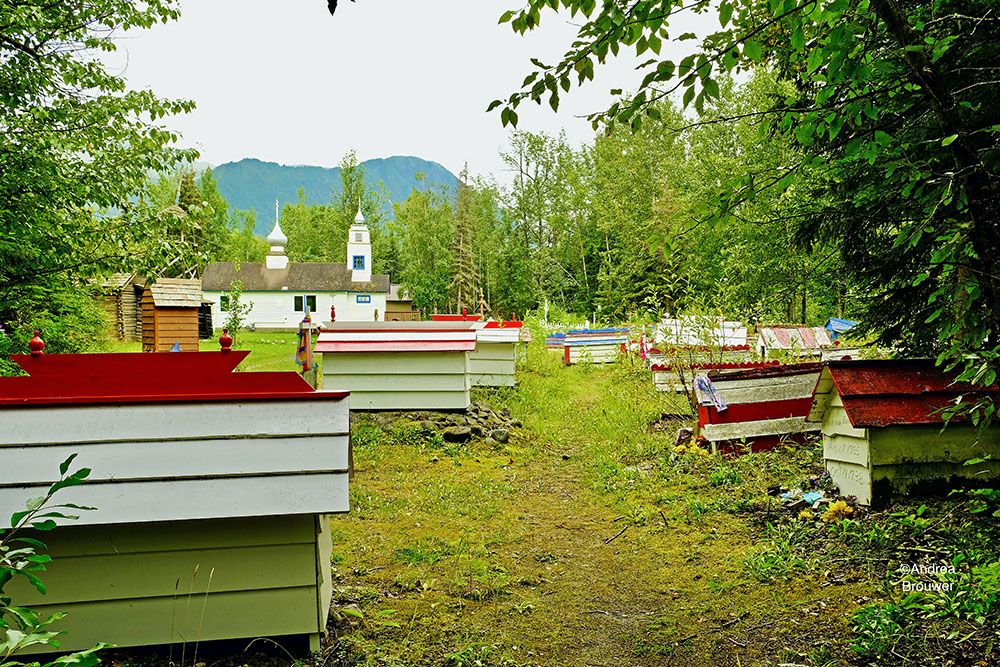
Nostalgia in vibrant Talkeetna
Upon arrival in Talkeetna, there is a lively atmosphere with many tourists and music on the terraces. The village itself is an open-air museum of old houses built around 1930, mostly for railway workers. Back then, as now, there were around 1,000 people living here. The houses themselves are modest in design and uniquely represent the early 1900s. The village is bordered by the imposing Susitna River.
We stay at ‘The Old Roadhouse‘, which has served as an inn since the early days. The rooms are still in their original state, with the three rooms now having their own bathroom in the hallway. There’s also a bakery in the building, perfect for breakfast the next morning. A night in style!
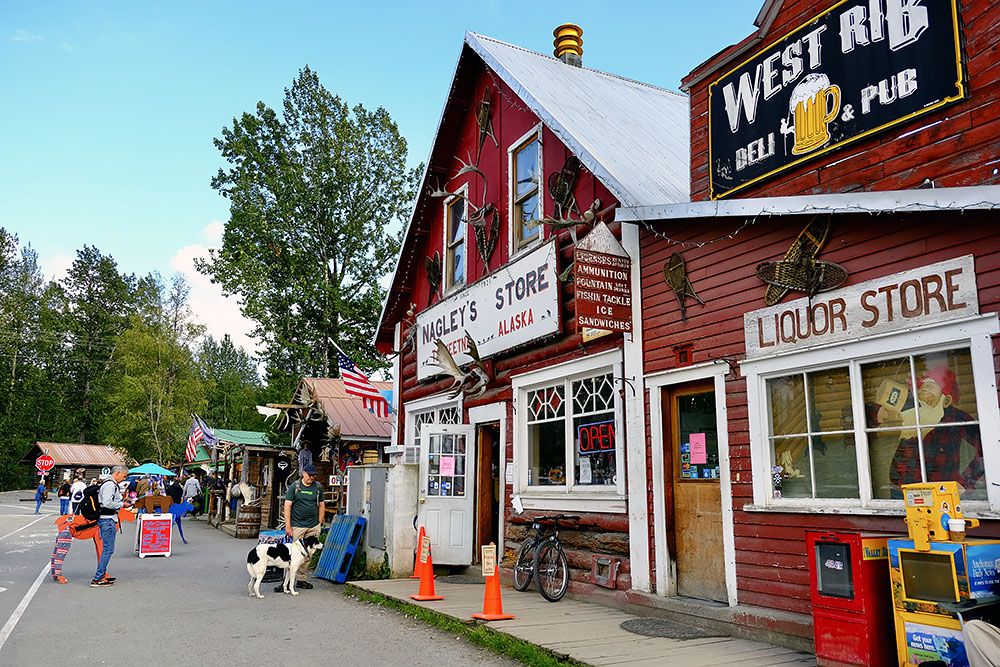
Pristine wilderness in Denali National Park
The route from Talkeetna to Denali is beautiful. As we approach the park, the scenery becomes increasingly impressive. Unfortunately, the cloud cover and rainfall also increase. It rains all day and doesn’t stop. This is why we don’t get to see the more than 6000-meter-high white peaks of Mount Denali. We first visit the well-organized visitor center and take a walk from there.
The next day, we have a bus excursion planned. This is the way to venture deeper into the park. Due to the cloud cover, we still can’t see the high mountain peaks. However, it’s dry, and we can spot several wild animals. The highlight is a mother grizzly bear with her cubs. It’s a unique spectacle to see these animals in their natural habitat.
Hiking in the park is also possible, and that’s how we conclude our visit to this unique park. For more information about the park, see our blog about Denali National Park.
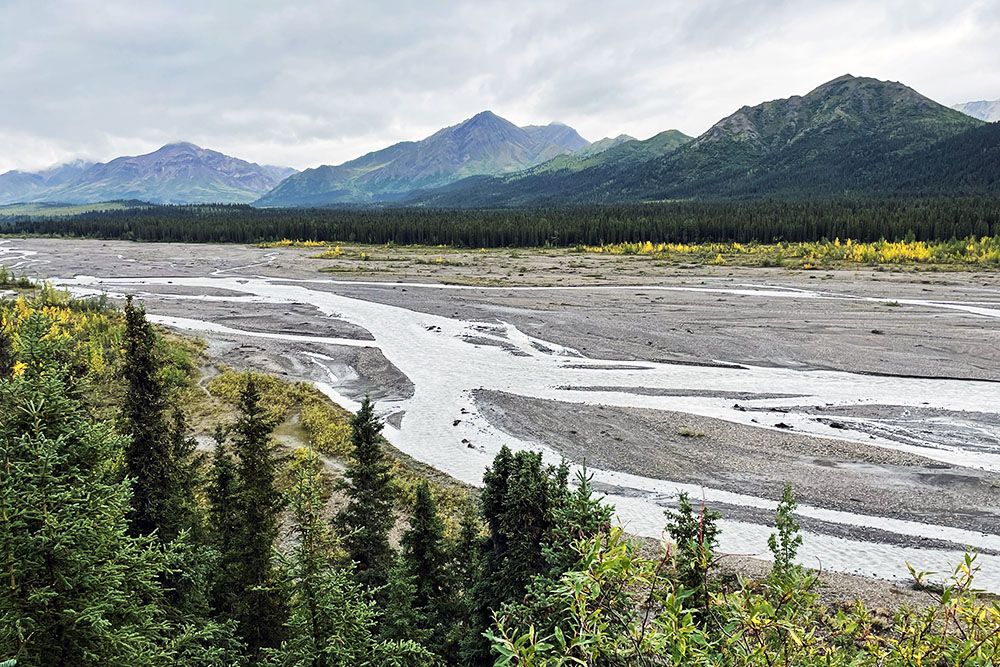
Heading to see the Northern Lights in Fairbanks
In Fairbanks, we experience the vast expanse over which the city stretches. We head to the downtown area and have lunch at ‘the Crepery‘, a fantastic creperie offering a wide selection of sweet and savoury crepes. In the downtown area, we explore some authentic houses from the early 1900s, standing somewhat lost amidst the new buildings.
Fairbanks is the place to see the northern lights (Aurora Borealis). At the University Museum, we watch an interesting film about this phenomenon. Over the next few evenings, we search for a glimpse of this extraordinary light show. Unfortunately, thick cloud cover completely obscures the view. It makes us realize that in nature, things are not always readily available on demand.
A visit to the Chena Hot Springs is worth planning, as is an excursion to a gold mine for some ‘gold panning‘. We feel like we’ve stepped back a hundred years as we search with a pan for the (likely pre-planted) gold nuggets. We stayed in Fairbanks for three nights, and it’s definitely recommended. Soon we will publish a separate blog about Fairbanks with more information and what you can do there.
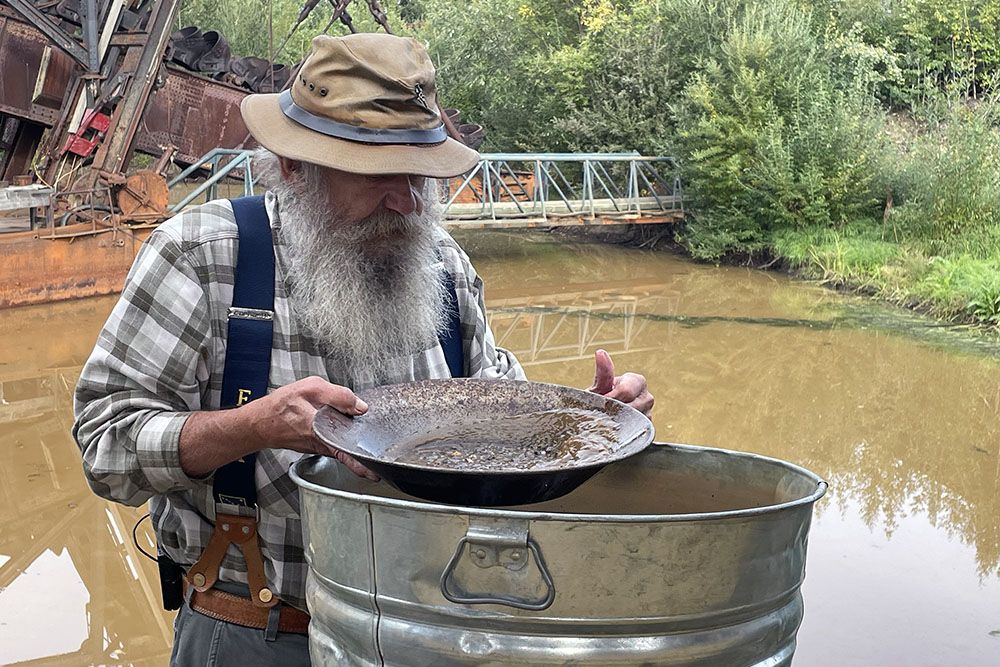
Grand riverbeds at Delta Junction
The route from Fairbanks to Valdez passes through Delta Junction, where we have planned to stay overnight. We drive along the Gulkana River with an impressive riverbed hundreds of meters wide. Along the way, we occasionally come across parts of the Trans-Alaska oil pipeline, the world’s largest oil pipeline, stretching 1278 kilometers.
Our B&B has a rooftop terrace, and from that vantage point, we casually see a moose mother with her calf crossing the yard. Wild animals in the backyard of the B&B!
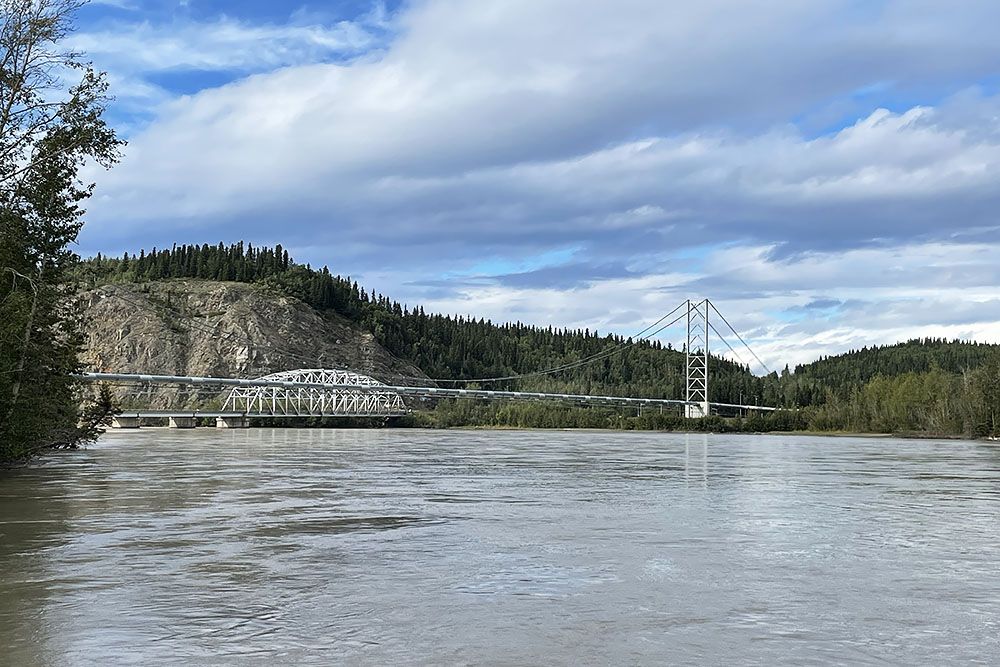
Countless lakes on the way to Tolsona
The next day, we drive on to Tolsona as a stopover for Wrangell-St. Elias National Park. In the evening, we stay at the Tolsona Lake Lodge, where time seems to have stood still. With a view over the lake, we feel like we’re in the 1960s, enjoying hamburgers and fish and chips. The lodge is adorned with (dubious) sayings and stuffed animals. A potential descendant of Johnny Cash is getting ready to entertain the (still missing) audience. The hotel room has walls made of cardboard. Try to see the humour in it.
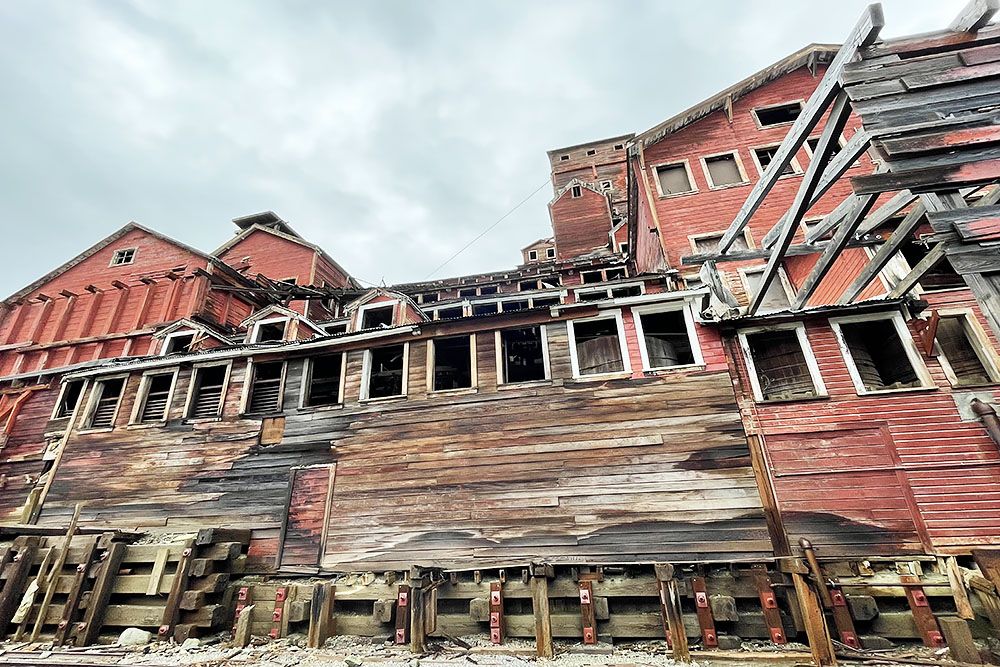
The abandoned mining town of Kennicott in Wrangell-St. Elias National Park
The drive to Wrangell-St. Elias National Park goes through Chitina. There, you have the option to cover the last 90 kilometers by plane or car. We choose to make the journey by car on the McCarthy Road. This road was long known as a ‘challenging route’ but has significantly improved in recent years.
After a two-hour drive, we reach the end of the road, a footbridge over the Copper River. There, we are picked up by the lodge’s van. Our lodging, the Kennicott Glacier Lodge, is situated next to the old buildings of this mine. From 1920 to 1938, there was a lively village here with over 400 workers. After the mines closed, the buildings were left in their working state. An impressive complex in the middle of the mountains next to an enormous glacier, the Kennicott Glacier. The combination of glacier, industrial heritage, and national park makes this place unique. With an hour’s walk, you can stand next to the glacier and even walk on it, preferably with a guide. The village itself has a few permanent residents, accommodations, a visitor center, and some shops.
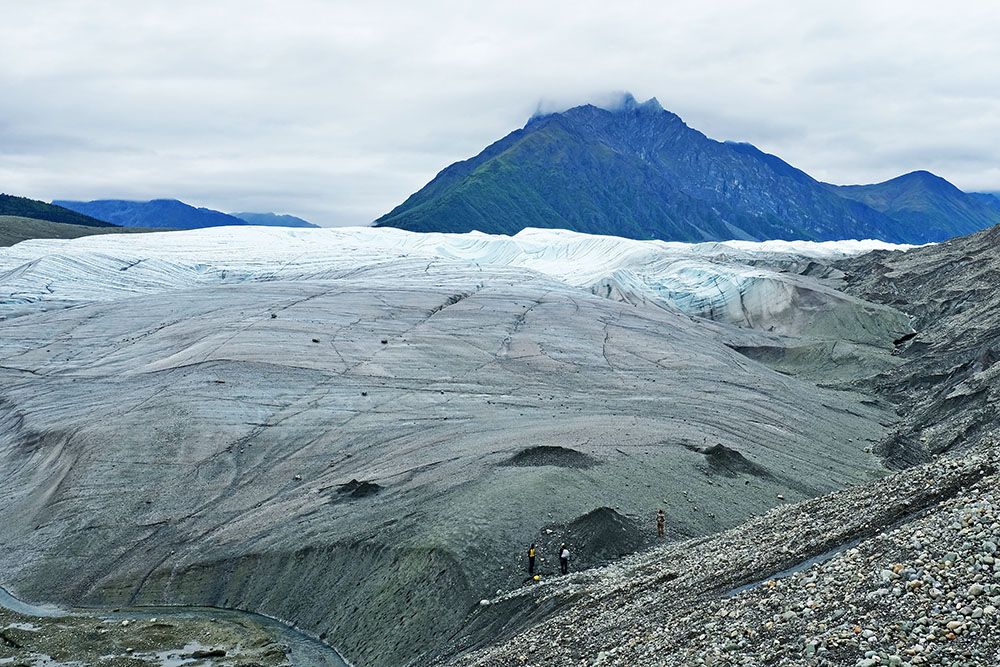
Stunning fjord landscape in the port town of Valdez
From Chitina, we drive towards Valdez. The road runs along rivers where glacier meltwater cascades down with great force. We pass the Worthington Glacier. Equally impressive is the Thompson Pass, a gorge through the Chugach Mountains. As we get closer to Valdez, we are impressed by the immense power of the Tickel River alongside which we drive. The low-hanging clouds create a mysterious scene, intensified by the roaring sound of the river. Countless waterfalls feed the river with enormous amounts of water. It’s a spectacle that prompts us to spontaneously pull over.
Valdez is a port town with 4,000 inhabitants. Fishing is a major activity, and the fish are partly cleaned in the harbour. A fascinating sight. The town has a local museum and plenty of restaurants. The surroundings are ideal for hiking. For more information about Valdez and what you can do there, refer to the upcoming blog about Valdez.
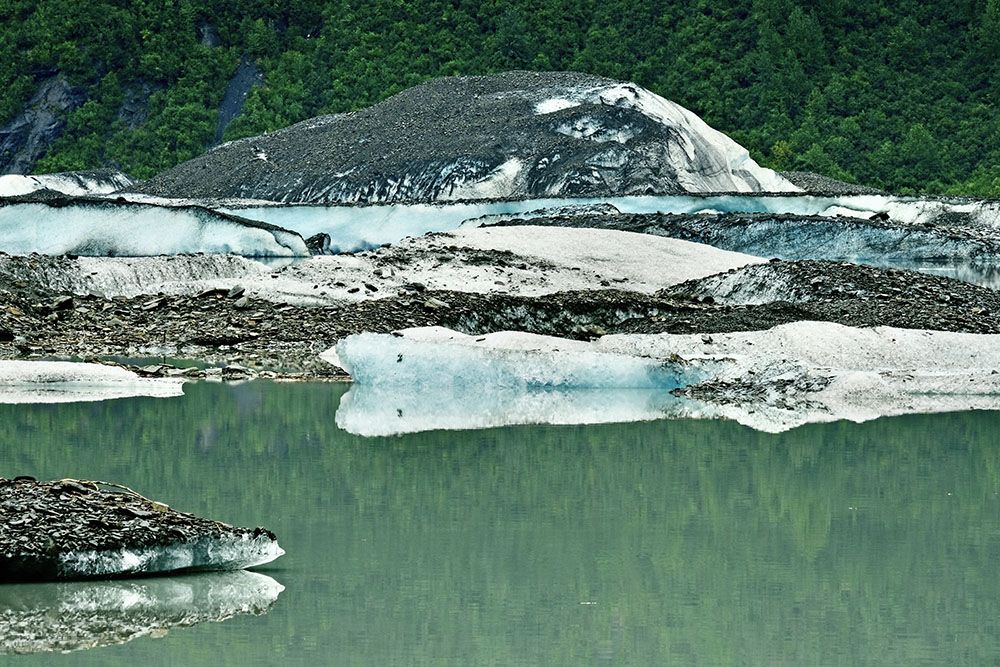
Excursion to Prince William Sound
Valdez is the base for the Prince William Sound, an impressive stretch of sea with whales and surrounded by glaciers. We have planned a transfer with the ferry from Valdez to Whittier. The idea is to acquaint ourselves with this part of the sea in this way. This also allows us to cover a considerable distance towards Seward, our next destination. The boat departs at six in the morning. Unfortunately, the rain has already started, and we sail in the clouds until we arrive in Whittier. From there, we drive to Seward.
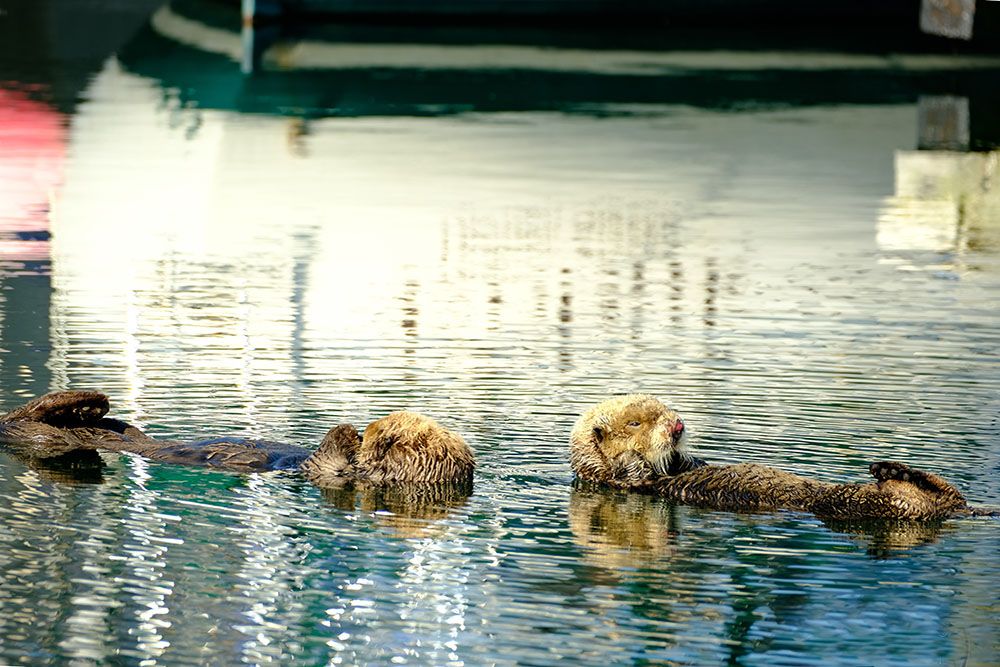
Seward as the gateway to the impressive Kenai Fjords National Park
Seward has a strong tourist appeal and gives off a lively impression. There are plenty of restaurants and shops. The town consists of a section by the harbour and, further south, the old centre of the town. It’s an ideal starting point for a visit to Kenai Fjords National Park.
On our first day in Seward, we have a planned excursion in Kenai Fjords National Park. This is a must-visit when exploring this part of Alaska. In fact, it’s more than a good reason to include Seward in your travel plans. The on-water excursion is an experience in itself. Think of encountering whales, seals, and otters along the stunning fjord coast. It’s definitely worth dedicating a whole day to, especially in good weather. Read more about this excursion in ou blog about our visit to Kenai Fjords National Park.
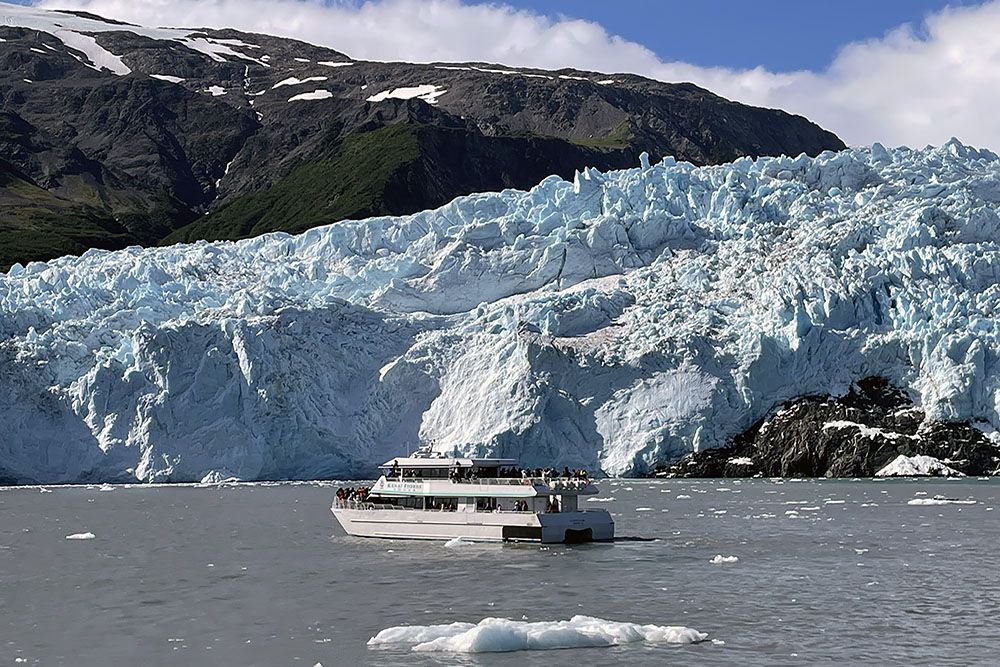
Exploration of marine life at the Alaska Sealife Center
Finally, we visit the Alaska Sealife Center. This marine life research center sits beautifully by Resurrection Bay. It also serves as a rehabilitation center for weakened seals and sea lions. A visit here supports their work. It’s fascinating to explore the underwater world here and observe how puffins transform from birds into agile fish when diving for food.
We conclude our visit to Seward at the old station, now an antique shop and bar. From there, we have a beautiful view over the bay. On the way back, we buy crab from one of the seafood restaurants, which we let swim in a local beer in our cabin. Alaska at its best.
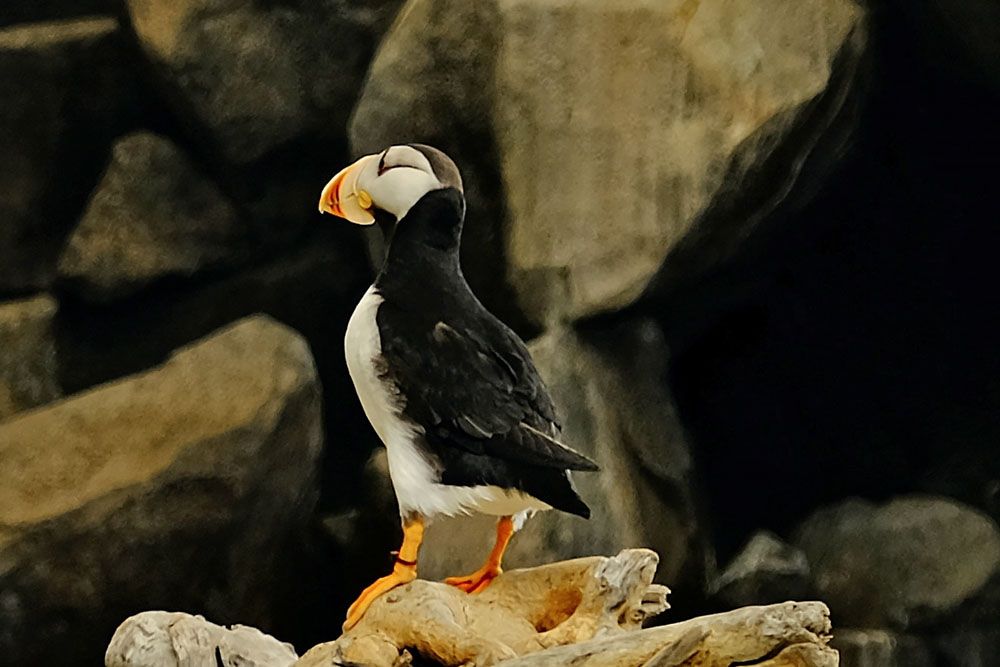
Bears and sunshine in Homer
The road from Kenai southwards runs along the west coast of the peninsula. Homer is the main town in this region. Thanks to its mild climate, it’s a pleasant place to stay. It’s home to around 5,000 residents, including many artists. There are also plenty of recreational opportunities. There’s a wide offering of ‘bear viewing with bush-planes’. At the Homer Spit (an eight-kilometer-long spit of land in the sea), many travel agencies offer various excursions.
Homer borders the Kachemak National Park. You can explore this park by boat, canoe, or on foot. We have planned a day trip to Seldovia to view this area from the sea. Seldovia is a beautiful, authentic town where the houses on stilts present an idyllic scene. There are also hiking opportunities. We explore the Otterbahn trail and suddenly find ourselves face to face with a black bear halfway through. The bear clearly hides from us. Fortunately, with the help of other hikers who arrive behind us, we manage to make the bear move away with clapping and shouting. That works, and we continue our journey.
Homer is a great place to stay longer if you have the time.
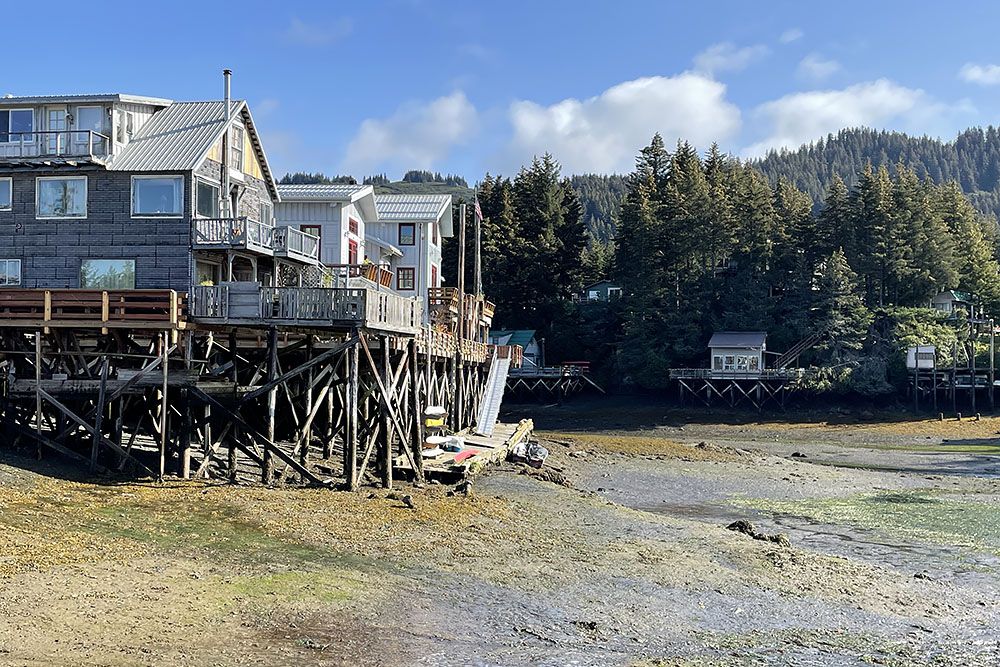
Ski resort in Alaska with summer hiking trails in Girdwood
On the way back to Anchorage, we stayed in Girdwood. This place originated from gold mining in the early 1900s. The original village was heavily damaged during the 1964 earthquake and was then rebuilt several kilometres inland. Now, it’s a friendly village surrounded by mountains.
During the winter, it’s a skiing destination, and in the summer, it’s great for hiking. We took the Beaver Pond Trail directly from our accommodation. Expect about 2.5 hours through dense forest to reach a marshy area, a perfect spot for birdwatching.
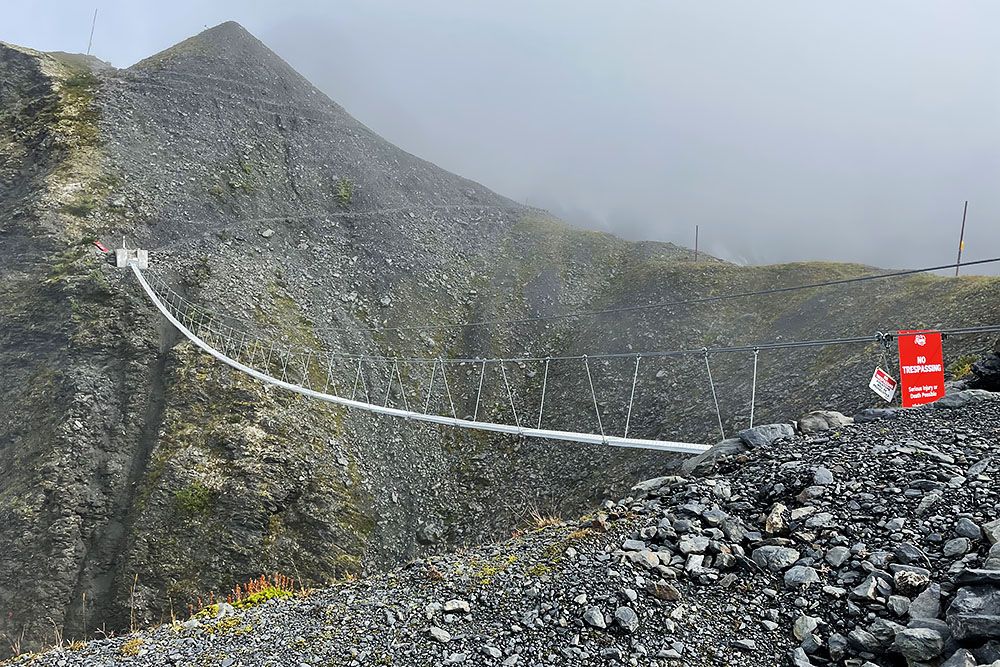
Weather permitting, you can conquer Mount Alyeska via the North Face Hiking Trail. Once at the top, you can easily reach Alyeska Glacier. The return trip on the lift is free. If you take the lift up instead of walking, it costs $45 per person.
Girdwood has several good restaurants. It’s a great stopover on the way back to Anchorage Airport. Expect about an hour’s drive to the airport.
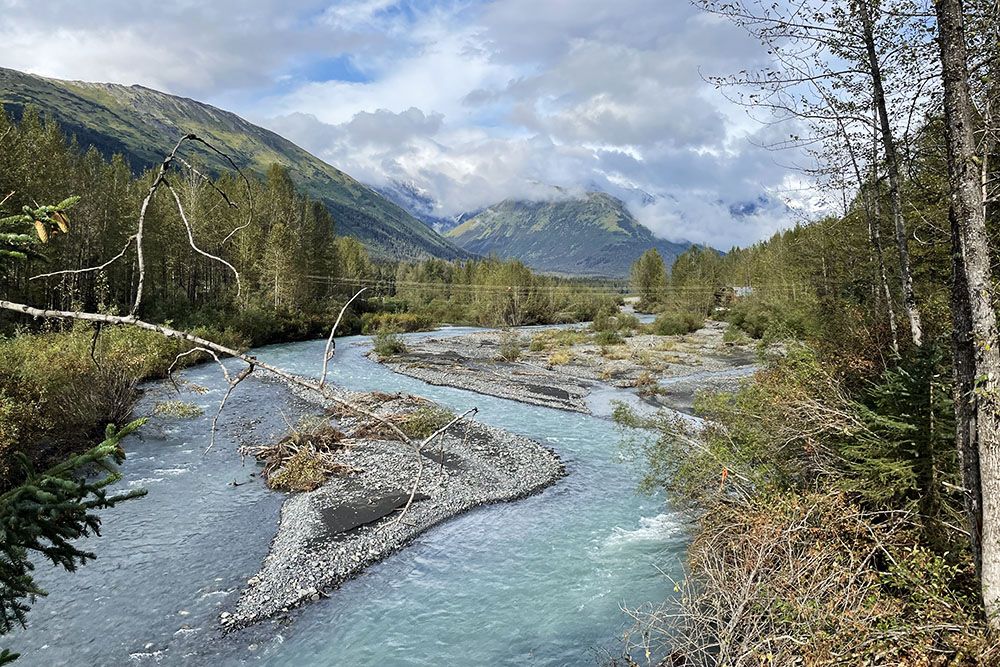
Reflection on our three-week tour of Alaska
Looking back, we found Alaska to be a pure and authentic part of America. It’s scenically beautiful with impressive mountains, glaciers, and waterfalls. Wildlife is a natural part of the region. You experience wonderfully fresh air with a sense of space everywhere. Alaska has been a wonderful experience for us. Not all expectations were met regarding the peaks of Denali or the Northern Lights. However, in other aspects, those expectations were exceeded.
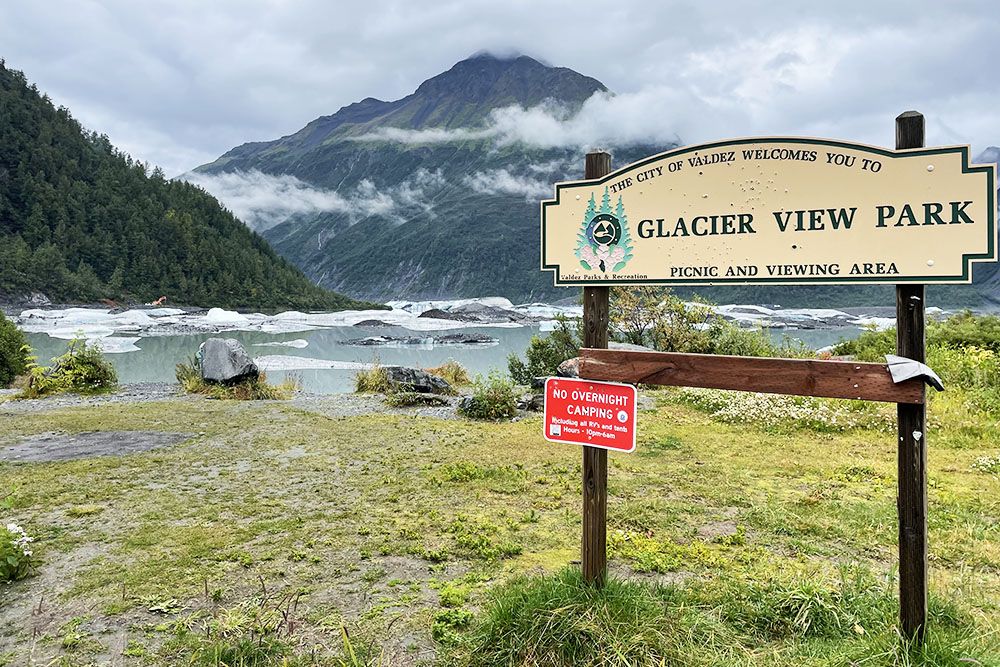
FAQ’s about a tour of Alaska
Alaska is the largest state in America in terms of area but has no more than 740,000 inhabitants. It's hard to imagine that in an area the size of the Benelux, France, Germany, and Spain, there are so few people. Most residents are located around Anchorage. However, the capital is Juneau, which is situated further south.
Until 1867, Alaska belonged to Russia. This is why there are several Russian Orthodox churches. The Russian language is still spoken in more remote areas. The purchase of Alaska by America has proven to be a good economic investment. It was sold for 7.2 million US dollars at the time, which is a fraction of what the purchase has yielded in terms of resources (copper, gold, and oil).
The history of Alaska is characterized by a few major natural disasters. The major earthquake in 1964 and the Exxon Valdez oil tanker disaster in 1989 are the most well-known. Additionally, the Gold Rush around 1900, the construction of railways, and the Trans-Alaska Oil Pipeline are significant historical events for the country.
It's a term commonly used to characterize Alaska, meaning the final frontier. It refers to the unspoiled and pure nature of this region.
The main tourist season runs from May to mid-September. Due to Alaska's vast expanse, there are multiple climatic zones. Moving northward, it becomes more of a continental climate, with extreme cold and short daylight periods in winter. We experienced temperatures around 18 degrees Celsius at the end of August. Further south, the climate is milder.
By late September, you can already see the vacation activities winding down: sales begin, camper parks (Recreational Vehicle/RV parks) empty out, and there's plenty of accommodation available.
A winter visit to Alaska can also be a unique experience. Consider activities such as dog sled rides (like the Iditarod). Keep in mind that the daylight period in winter is very short.
While there is a good train connection between the largest cities (Anchorage - Fairbanks - Seward), it's noticeable that travel costs are high. Additionally, travelling by train restricts your mobility.
Renting a car is a great way to explore the country. In fact, without a car, you won't get very far. Ideally, choose a car with higher clearance, as there are numerous gravel roads which can have significant potholes. The road to McCarthy in Wrangell-St. Elias is a prime example. However, the roads are generally good and fairly quiet. Alaskans are generally very accommodating, and in remote areas, people greet each other. Be prepared for road construction. It's customary for traffic to wait in one direction for 15 minutes or longer. Just factor it in and consider it a part of the experience.
Another common way to explore the country is by camper. There are many camper parks, and you can also find opportunities for free overnight stays along the road.
The cuisine in Alaska is typically pure. On the menu, you'll find a lot of salmon and halibut. Crab and meat dishes (burgers) are also readily available. Vegetables often need to be ordered separately, and the portions are often large enough to be shared by two. As is customary in America, you can take home any leftovers.
Local beer is a phenomenon in itself, and the quality is excellent. Wine is also available on almost every menu. In supermarkets (Segway, Fred Meyer), there is a wide range of both fresh and packaged food items.
The prices are about 20 to 30% higher than what you're used to in Europe. You always need to show ID when buying alcoholic beverages in supermarkets.
- Anchorage: Downtown Guest Rooms. A pleasant location within walking distance of the city center and the station. The host lives on the first floor and is very helpful. The rooms are clean, spacious, and provide a great place to acclimatize. There is no cooking facilities, but there is the option for coffee/tea. Good value for money.
- Talkeetna: Talkeetna Roadhouse. An old roadside restaurant from the early 1900s, reflecting the atmosphere of the museum village. The rooms are small, but it's an experience to stay here. You have a private bathroom down the hall. There is a large communal area, and you can enjoy a great breakfast with a gigantic cinnamon roll; there is a bakery attached to this unique location. There are only three rooms, so book in advance.
- Healy near Denali: White Moose Lodge. This accommodation is located in Healy, a hamlet where people mainly live who work in Denali Park. The rooms are dated and the overall impression isn't very cheerful. Perhaps the cloudy, rainy weather enhanced this impression. The advantage is that it provides easy access to the park. There isn't much to do in Healy, apart from eating at the 49th State Brewing, which is crowded every evening.
- Fairbanks: Cozy Log Cabin. A spacious and pleasant chalet with its own garden and well-equipped kitchen. This accommodation is located a 15-minute drive outside the city, but is central for visiting the various activities around Fairbanks. The potential downside is that there is no shower and the toilet is outside; it's a 'dry-cabin'. However, you have all the privacy - it's a family vacation home - and there is a beautiful veranda where you can relax in good weather (with sufficient mosquito repellent).
- Delta Junction: Delta Dome Basement Apartment. The most appealing feature of this spacious apartment is the rooftop terrace. However, the apartment is well-furnished and facilitated but is located in a basement. Therefore, there is no outside view from within.
- Tolsona: Tolsona Lake Lodge. Shabby, noisy, and not particularly clean, but it's located in a beautiful spot with a view over the lake. There isn't much to do in the area; it's more of a stopover. You can dine at the roadhouse, but breakfast is a point of negotiation (they don't like to get up early). We found it to be pricey for what was offered.
- Kennicott: Kennicott Glacier Lodge. Book directly through their website (well in advance). A beautiful hotel opposite the glacier in an old-fashioned style. Attentive care and cleanliness. With all decorations and utensils from the 1920s, you'll feel like you're in the early 19th century. The downside is the shared use of toilets and showers in the old section. However, they are continuously cleaned, making it less of an issue. The rooms can be a bit noisy at times. It's, above all, a unique experience at this location, which you can also visit by a small plane. Pick-up and drop-off service to the public road or the local airport is included in the price. It's in a higher price range with full board.
- Valdez: A place on Coho. This accommodation has three rooms with a shared shower and bathroom. There's also a large common area with a kitchen, seating area, and dining area. The entire place is well-managed and cleaned by host Dianne, who is almost always there (the owners live upstairs, the B&B is downstairs). The address is in a new residential area, a half-hour walk from the city centre, so a car is necessary.
- Seward: Box Canyon Cabins. Detached 2-3 person cabins with cooking facilities, shower, and toilet. Well-facilitated and neatly maintained in a small-scale park (about 8 cabins of various sizes). The park is a five-minute drive from Seward, in the forest on the road to the Exit Glacier. There's the possibility of a barbecue. It's in a higher price range.
- Homer: Cozy Cove Inn. A lovely and spacious apartment with its own entrance, cooking facilities, and a beautiful view. All amenities are well taken care of, and a friendly hostess. We found this to be the most beautiful location during our stay in Alaska. It's a 10-minute drive outside the village, but this is compensated by the location. You can take various walks from the accommodation (bear spray is provided), and you regularly see moose from the window. It offers good value for money.
- Girdwood: On invitation from Little America, a specialist in unique, tailor-made trips to the United States and Canada, we found accommodation at Carriage House Accommodations run by Rachel and Jake. This location fits entirely into the way of travelling we seek; small-scale, personal, and in a beautiful place. The apartment has its own entrance, is spacious, has a separate bedroom, and plenty of kitchen facilities. This is very convenient, especially when you're away from home for an extended period and don't always feel like eating out.
Opposite the B&B is a renowned restaurant if you feel the need. The hosts are extremely welcoming. Jake, as a craftsman, has built many of the accommodations with his own hands. This jovial ex-rugby player is hard at work when we arrive. He takes the time for introductions. Rachel, like us, loves hiking and provides us with various tips for hiking opportunities in the area. Girdwood itself is a pleasant place where skiing is popular in winter. A great place for a last stop as it's reasonably close to Anchorage Airport.
Alaska is expensive if you're coming from Europe. Groceries, dining out, and coffee/tea along the way quickly cost about 30% more than what you're used to in your own country. However, petrol is half the price. Museum visits usually cost around 15-20 dollars per person.
In terms of clothing, it's best to opt for long trousers and layered clothing. Shorts can be enjoyable occasionally. You'll need swimwear for the hot springs. At the very least, bring a good raincoat. Additionally, mosquito spray is a must, especially in areas with lots of water. Bear spray is usually not necessary or is provided at the B&B. You can always inquire in advance if it's necessary at a visitors centre or with the host at your B&B or hotel.
The most common animals are moose, bears (black bears and grizzlies), wolves, foxes, Dall sheep (resembles a goat), caribou (Denali). You frequently encounter bald eagles, alongside numerous other birds such as puffins and cranes. The marine life is diverse, with otters, seals, sea lions, dolphins, orcas, and whales. And let's not forget, a lot of salmon and halibut.
The highlights of the Alaska tour for us are: Denali National Park, Kenai Fjords National Park, the Kennicot Glacier, the mining town of Kennicott, and the surroundings of Homer.
You may also be interested in
- Denali National Park: Top Attraction of Alaska
- Unique fjords with glaciers in Kenai Fjords National Park
- Bear spotting in Homer
- Hiking fun in Joshua Tree National Park
- Cycling and hiking in Yosemite National Park

